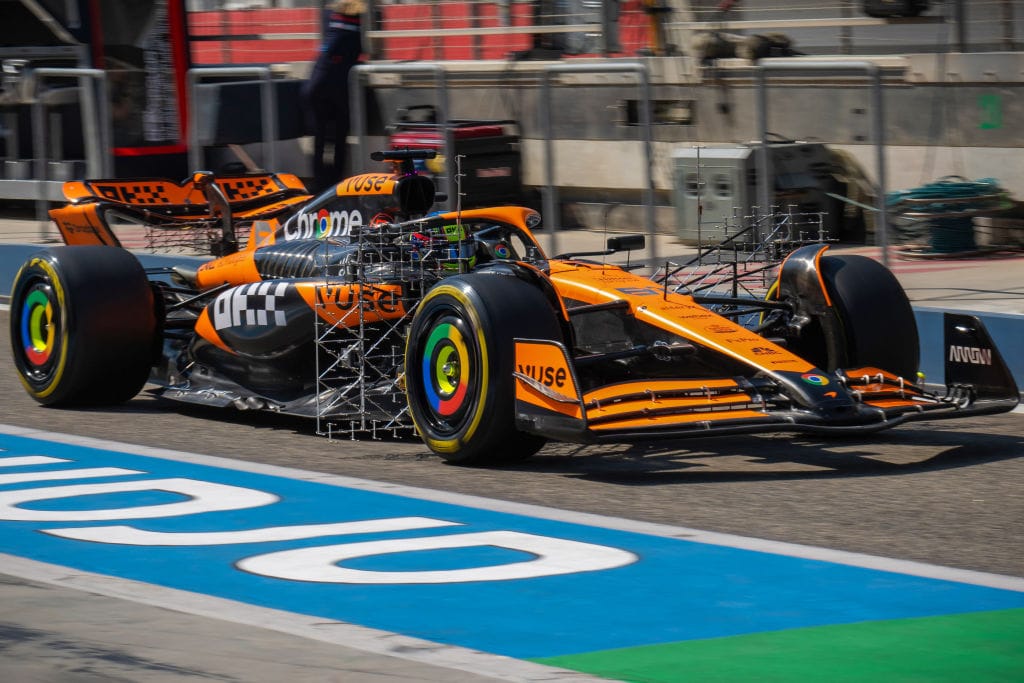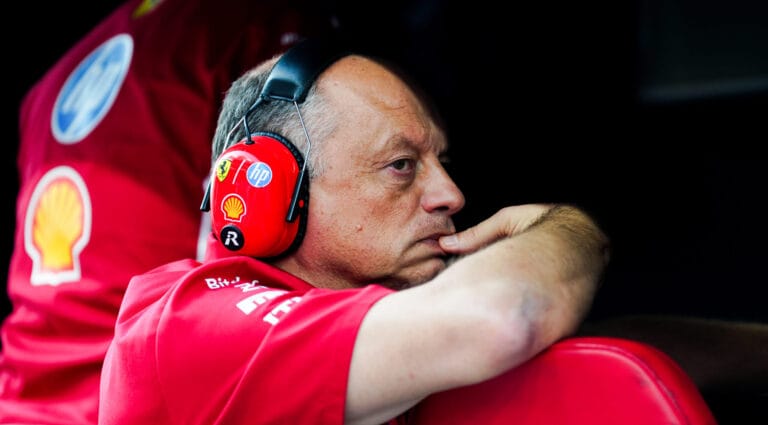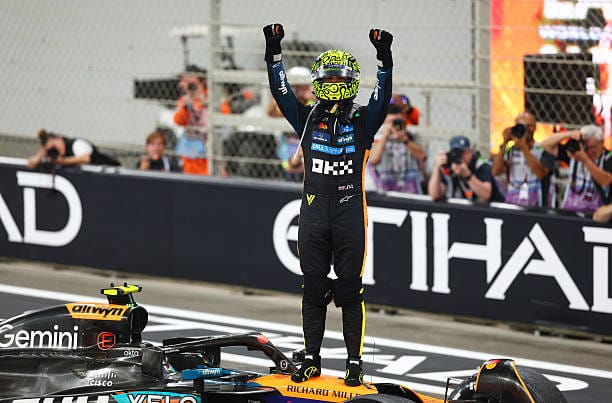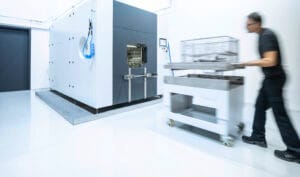The test days in Bahrain are about to begin, which means we will see many Formula 1 cars adorned with brightly colored paint and metal constructions. But what exactly do these striking tools do? Flow-vis and aero rakes play a crucial role in understanding and optimizing a Formula 1 car’s aerodynamics.
Flow-vis: Paint that Makes Airflows Visible
Flow-vis is a fluorescent paint, mixed with paraffin oil, that is applied to parts such as the front wing, side pods, or even the entire car during test days. As the car gains speed, the paint spreads across the surface, making the airflows visible. The lines that form provide teams with immediate visual feedback on how the air moves around the car. The goal? To verify if the airflows in practice match the results from the wind tunnel. After a run, detailed photos are taken of the flow-vis patterns. These images help aerodynamics specialists identify where airflows may deviate, which could lead to reduced downforce or additional air resistance.
Some teams even go a step further with invisible flow-vis, which is only visible under UV light. This prevents competitors from easily observing their strategies. This innovation underscores the strategic importance of aerodynamic data.
Measuring Airflows with Aero Rakes
In addition to the paint, we will also see large metal grids behind the front or rear suspension during the test days: aero rakes. These structures consist of sensors, ‘pitot tubes’, which accurately measure how airflows behave. By measuring the dynamic pressure, they can sketch a picture of the flow structures that come from the different parts of the car. Teams use the aero rakes to check the correlation between the data they gather in the wind tunnel and the reality.
How does this differ from flow-vis? While the paint makes the airflow visible on the surface, aero rakes measure what happens behind a component. They provide real-time data on pressure and airflow speed, crucial for optimizing the car’s setup.









